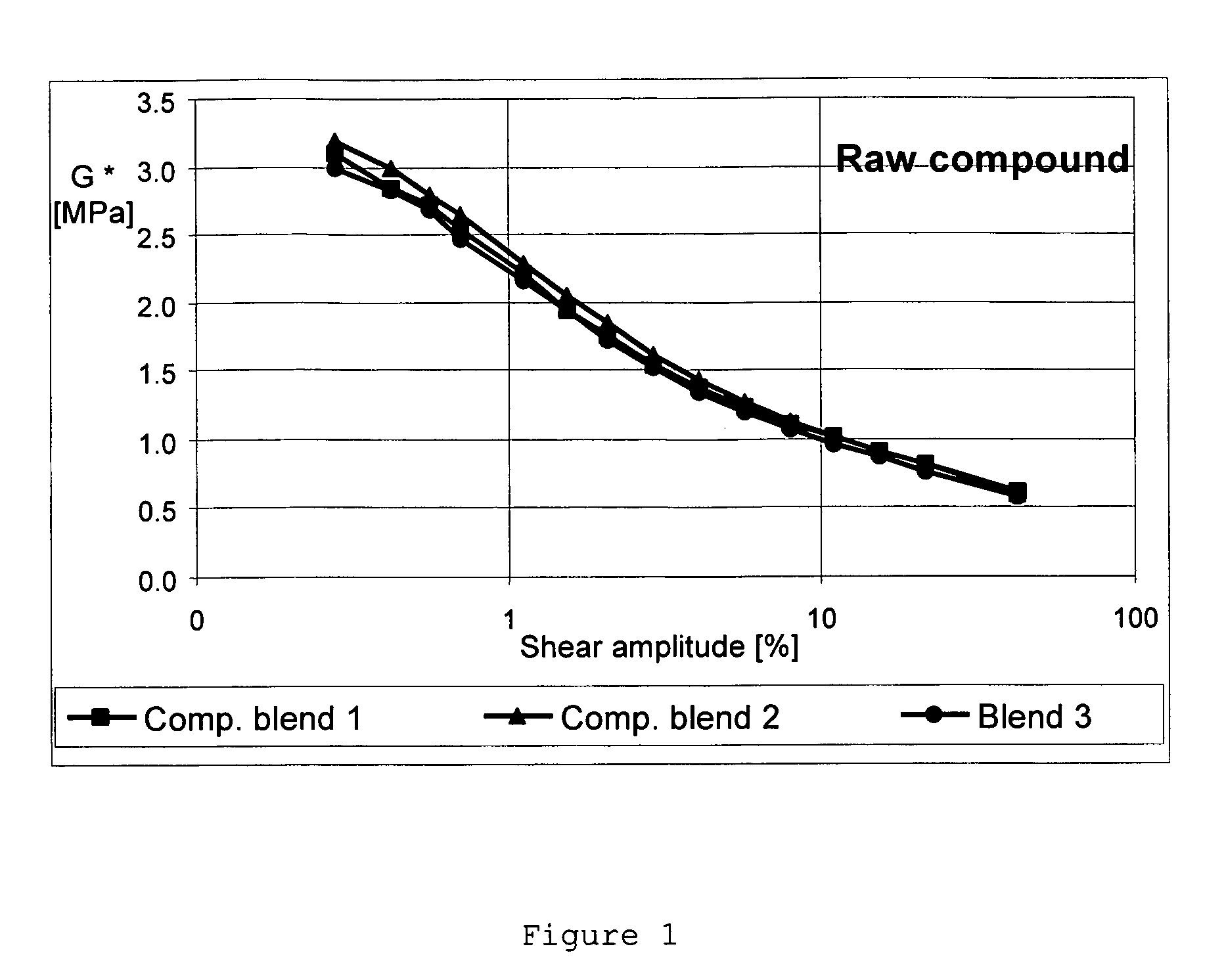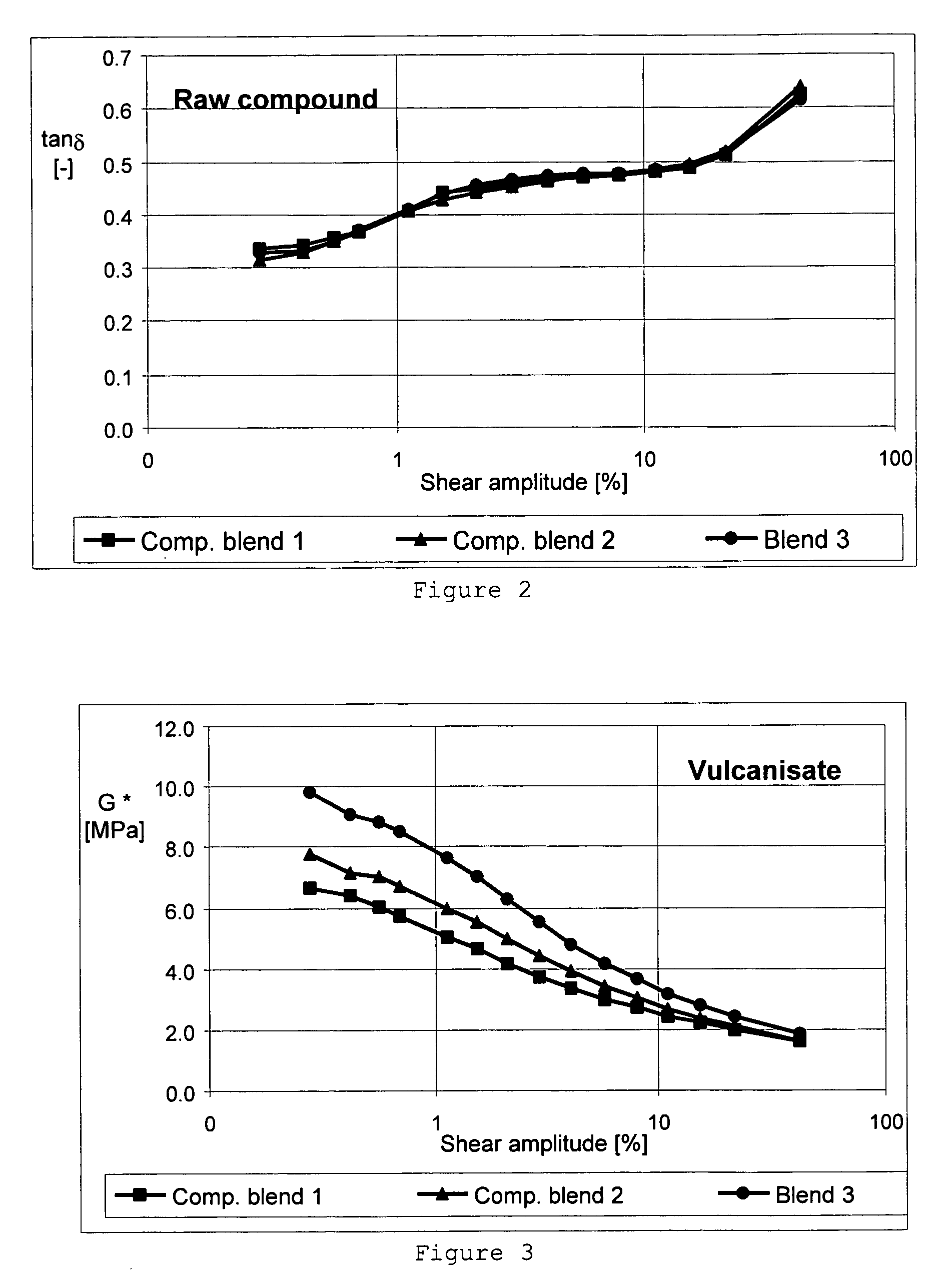Carbon black
a technology of carbon black and black oxide, applied in the field of carbon black, can solve the problems of hysteresis (correlated with rolling resistance) and/or dynamic rigidity (correlated with handling properties) deterioration, and achieve the effect of reducing hysteresis
- Summary
- Abstract
- Description
- Claims
- Application Information
AI Technical Summary
Benefits of technology
Problems solved by technology
Method used
Image
Examples
example 1
[0042]Production of the carbon black having organic groups according to the invention by reacting N-(4-thiocyanatophenyl) maleic acid amide with carbon black in a dry mix.
[0043]500 g of carbon black N 220 and 100 g of N-(4-thiocyanatophenyl) maleic acid amide are mixed for 5 minutes in a mixer and then tempered for 5 hours in a muffle furnace at 180° C. On completion of tempering the carbon black, in ten portions, is suspended in 1 liter of acetone per portion, extracted, washed with acetone and dried.
[0044]After the reaction the product is pulverized by grinding.
[0045]Conversion: 70% (relative to the N-(4-thiocyanatophenyl) maleic acid amide used)
example 2
[0046]Production of the carbon black having organic groups according to the invention by reacting N-(4-thiocyanatophenyl) maleic acid amide with carbon black in solution.
[0047]500 g of carbon black N 220 are suspended in a solution of 34 g of maleic acid amide of 4-thiocyanatoaniline in 10 liters of acetone. The solvent is then removed by distillation. The remaining carbon black-reagent blend is tempered for 5 hours in a muffle furnace at 180° C. On completion of tempering the carbon black, in ten portions, is suspended in 1 liter of acetone per portion, extracted, washed with acetone and dried.
[0048]After the reaction the product is pulverized by grinding.
[0049]Conversion: 82% (relative to the N-(4-thiocyanatophenyl) maleic acid amide used.
example 3
[0050]Production of the carbon black having organic groups according to the invention by reacting N-(4-thiocyanatophenyl) maleic acid amide with carbon black in solution.
[0051]500 g of carbon black N 220 are suspended in a solution of 67 g of maleic acid amide of 4-thiocyanatoaniline in 10 liters of acetone. The solvent is then removed by distillation. The remaining carbon black-reagent blend is tempered for 5 hours in a muffle furnace at 180° C. On completion of tempering the carbon black, in ten portions, is suspended in 1 liter of acetone per portion, extracted, washed with acetone and dried.
[0052]After the reaction the product is pulverized by grinding.
[0053]Conversion: 87% (relative to the N-(4-thiocyanatophenyl) maleic acid amide used).
PUM
| Property | Measurement | Unit |
|---|---|---|
| pressure | aaaaa | aaaaa |
| temperatures | aaaaa | aaaaa |
| temperatures | aaaaa | aaaaa |
Abstract
Description
Claims
Application Information
 Login to View More
Login to View More - R&D
- Intellectual Property
- Life Sciences
- Materials
- Tech Scout
- Unparalleled Data Quality
- Higher Quality Content
- 60% Fewer Hallucinations
Browse by: Latest US Patents, China's latest patents, Technical Efficacy Thesaurus, Application Domain, Technology Topic, Popular Technical Reports.
© 2025 PatSnap. All rights reserved.Legal|Privacy policy|Modern Slavery Act Transparency Statement|Sitemap|About US| Contact US: help@patsnap.com



